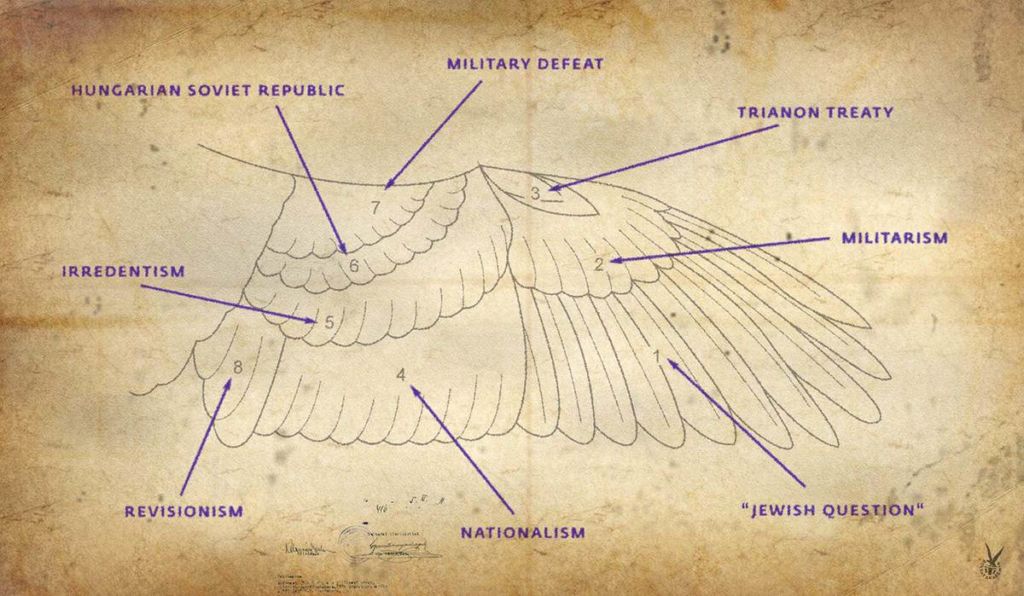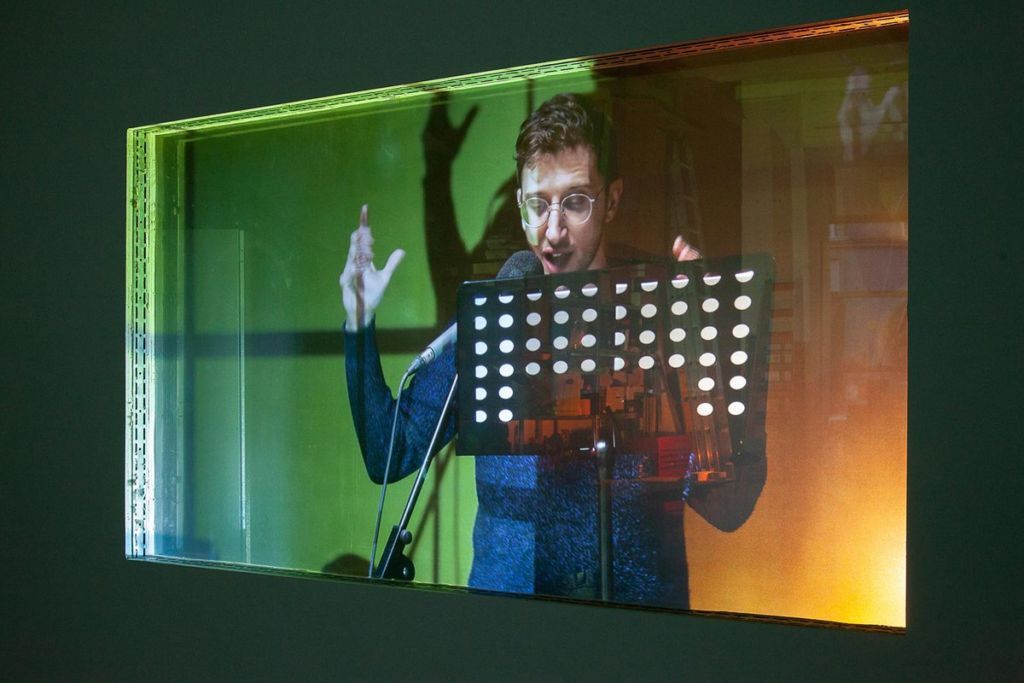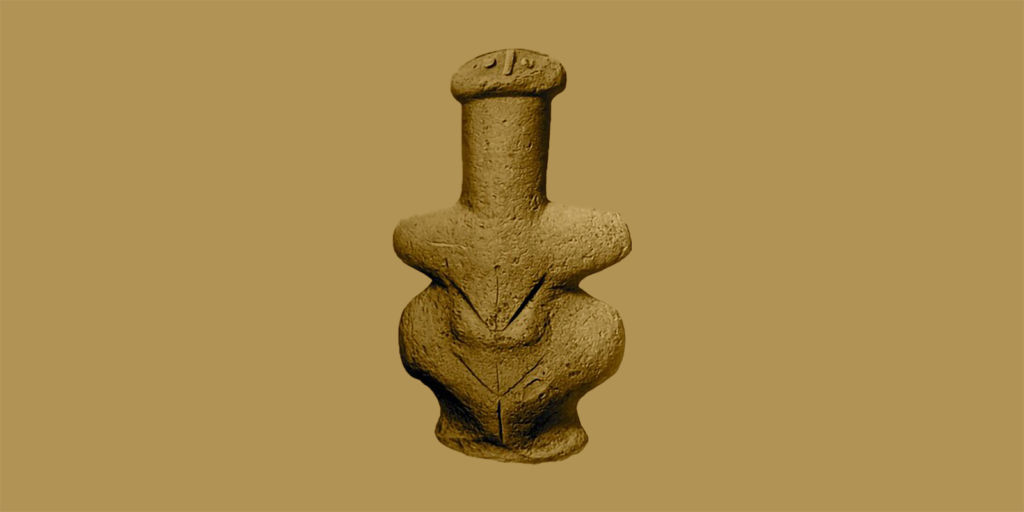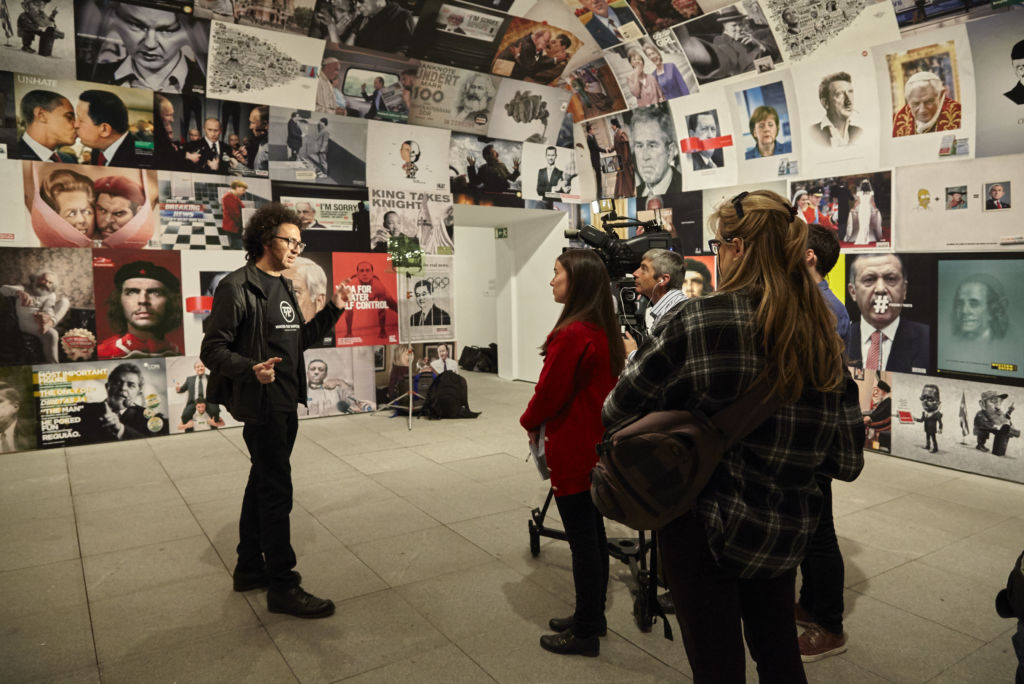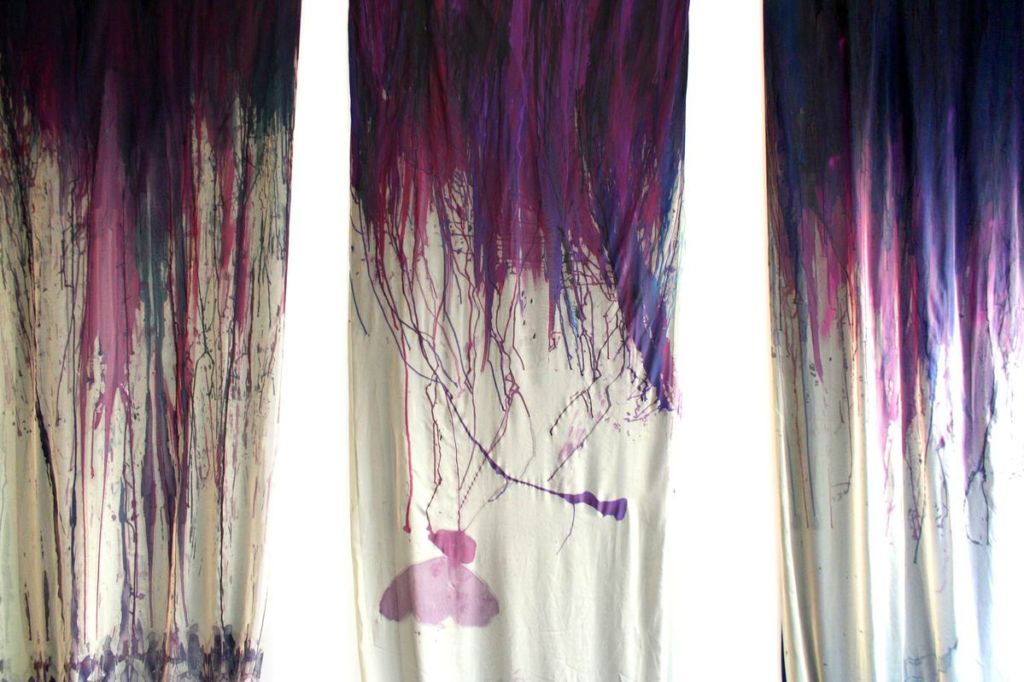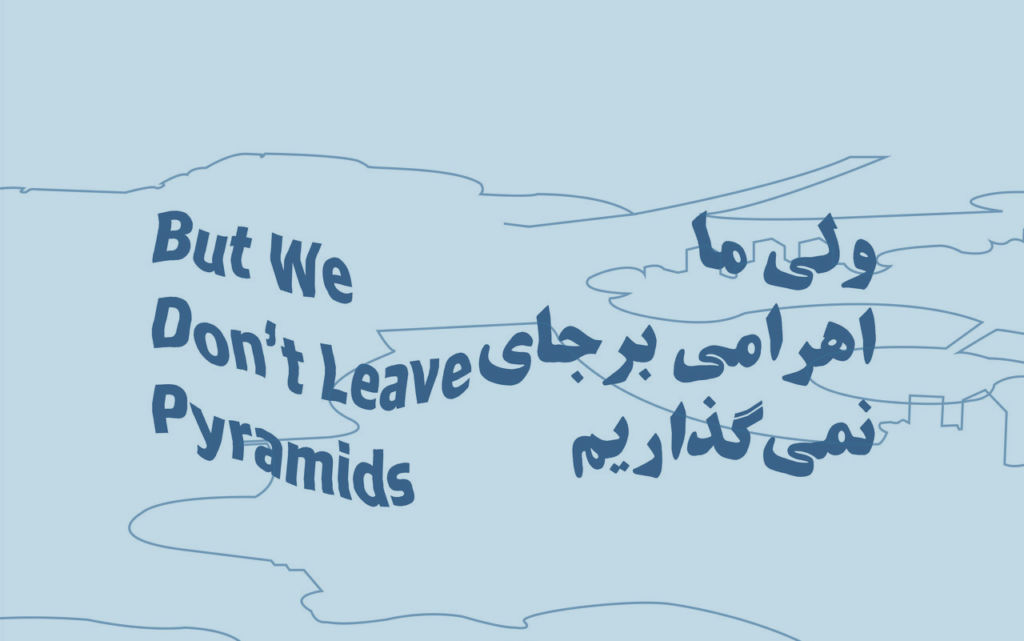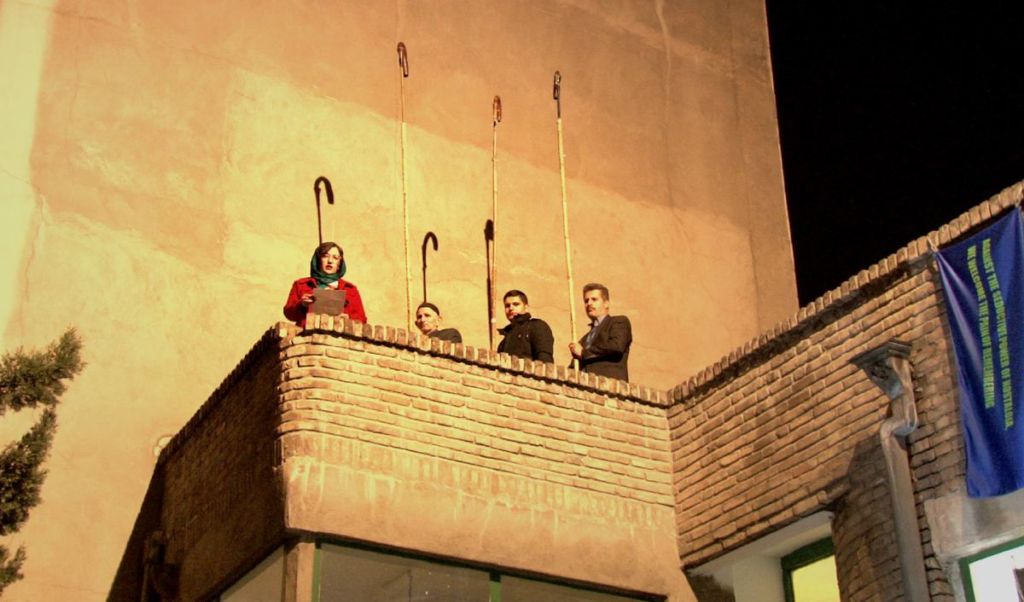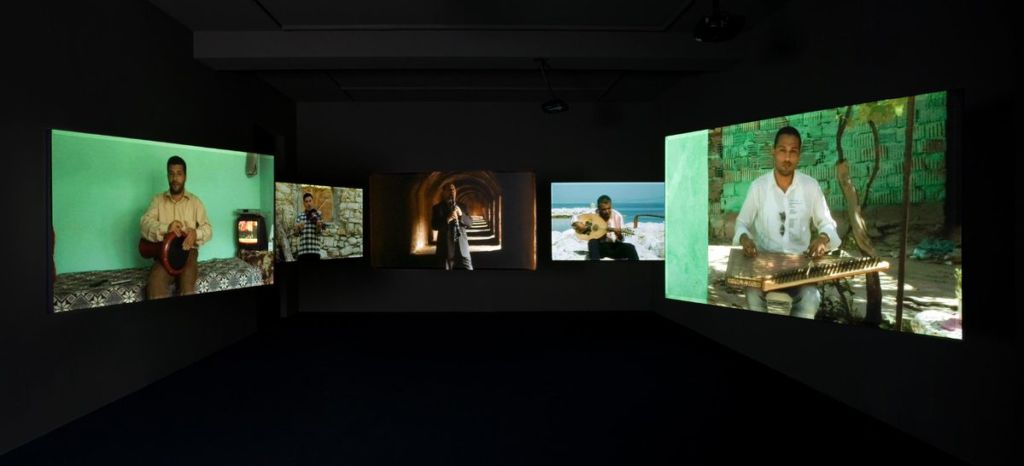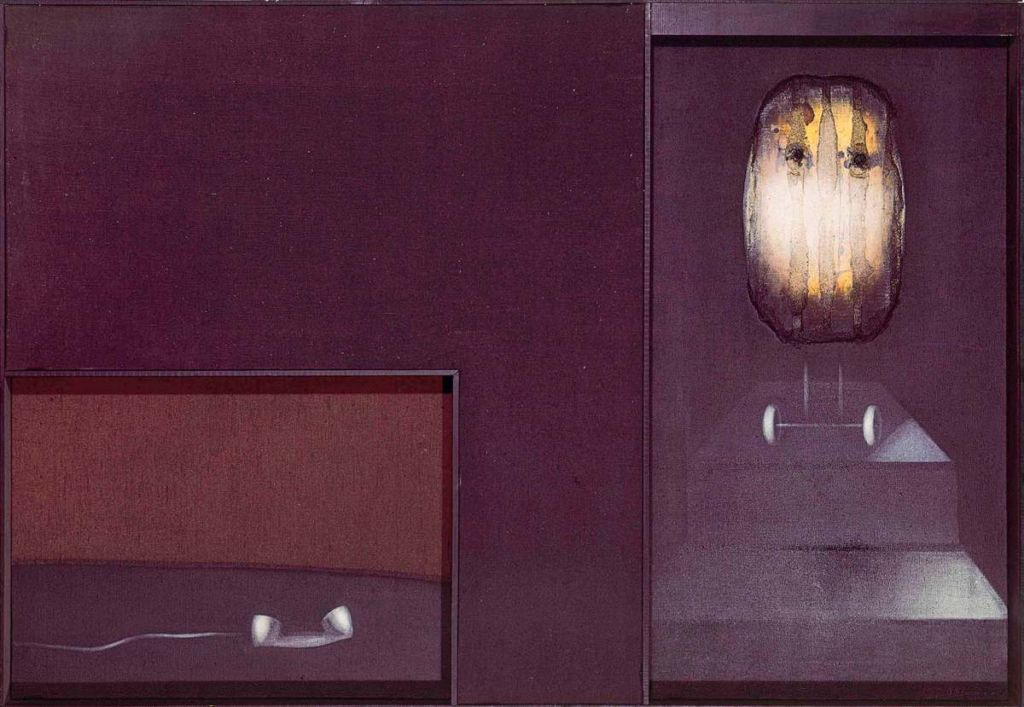Efforts to represent female artists and artworks that deal with feminist issues have become increasingly visible in large-scale art events, both regional and international, such as contemporary art biennials. The 2019 editions of the Cochin biennial in India, directed by Anita Dube, and the Rabat biennial in Morocco are two such events to put the spotlight on women. More and more women are named to direct foundations and museums in both the private and public sectors: Koyo Kouoh at Zeitz Museum of Contemporary Art of Africa in Cape Town, Hoor Al-Qasimi for the Sharjah Art Foundation in the United Arab Emirates. Even when it comes to the art market, we seem to be reaching new equilibrium. But the nature of this feminization in art is worth closer examination. To what extent can we consider it “real”, in the sense of sustainable and egalitarian?
June 2, 2019, hundreds of people stage a naked protest before Facebook headquarters in New York, with images of male nipples stuck to their bodies to denounce the unilateral censorship of female nudity on social networks. Organized by the National Coalition Against Censorship, the protest made a strong impact and was attributed to American photographer Spencer Tunick, known for his photos involving hundreds of naked people. And yet, it was actually a remake of a project launched in 2014 by American artist Micol Hebron in response to Instagram and Facebook deleting her photos taken for a breast cancer research campaign where women appeared bare-breasted, while bare male chests seem immune to censorship. The metaphor is two-fold: just as female nipples must be covered over by masculine ones in order to be allowed on social networks, works by female artists, scientists or writers have often been overshadowed by or attributed to their male colleagues, as critiqued by Oriane Stender in her opinion piece “A Woman’s Work is Never Done (Or, Too Often, Is Done and Attributed to a Man)” published June 6, 2019 on Hyperallergic.
Over the past few years, and particularly since the rise of the #MeToo movement in 2018, these women forgotten by History have been redeemed little by little in schoolbooks and curricula, but also through exhibitions dedicated to creation by women. In France, “elles@centrepompidou” (May 27, 2009 – February 22, 2011), a theme exhibition dedicated to the women artists in the Centre Pompidou’s permanent collections, set the tempo, followed by Women House (October 20, 2017 – January 28, 2018) at Monnaie de Paris and even Créatrices: l’émancipation par l’art (Women Creators: Emancipation Through Art, June 29 – September 29, 2019) at the Museum of Fine Arts of Rennes. The first two were curated by Camille Morineau, also the originator of the Niki de Saint Phalle retrospective at the Grand Palais in Paris (September 17, 2014 – February 2, 2015) and today the president of Aware, an organization that aims to restitute women’s place in art history.
An article by Emmanuelle Lequeux in Monde published in 2009 after the inauguration of “elles@centrepompidou” entitled “Le centre Pompidou glorifie les femmes au risque de les placer dans un ghetto” (The Pompidou Center Glorifies Women at the Risk of Ghettoizing Them) critiques the reasoning behind such events. The author reckons that separating artworks along the lines of the artist’s sex is a form of segregation susceptible to legitimizing discrimination toward women, who are perennially held apart, put to the side. For her, it is counter-productive to dedicate an exhibition to women. However, just as the introduction of quotas might be a first step toward more organic parity, isn’t it necessary to single out female creation in order to better highlight its absence from the usual collections, so that they may be better integrated?
The case for better representation in museums
Although the efforts made by galleries and museums to represent marginalized populations in their collections should be celebrated, they should also be put into perspective.
Mona Chalabi is a British artist and journalist of Iraqi origin specialized in statistical analysis, which she takes great care to reproduce in the form of illustrations. She lives today in the United States, where she observes a lack of representation in collections when it comes to gender or ethnic origin. 85% of the artists exhibited in major American museums are, indeed, white men, and inversely, the most under-represented are women of color.
As a response, the artist drew the series “Who Are You Here to See?”, which was shown at Zari Gallery in London. In her drawings, she points to this phenomenon while also proposing a more egalitarian composition of exhibited artists in museums, by adding what she calls “missing persons”. She therefore adds 189 extra persons to one of her paintings (79 White females, 26 Latina women, 18 Black women, 7 Asian women, 5 women and 4 men of other ethnic origin, 22 Latino men, 16 Black men and 12 White men); the final number of people corresponding to the number of artists the museum would need if it were to best represent the North American population.

Mona Chalabi, exhibition « Who are you here to see », Zari Gallery, May 2019.
Cochin Biennial, spotlight on women and minorities
A similar direction was taken by a unique biennial that took place in Cochin from December 12, 2018 to March 29, 2019, which made room primarily for women, starting with the exhibition’s curator, artist Anita Dube.
The approach was reminiscent of Women House, the exhibition at Monnaie de Paris and the National Museum of Women in the Arts in Washington, D.C. in 2018, which showed how women artists drew from domestic spaces, traditionally considered feminine, to exercise their creative freedom and claim their legitimacy. Women House was an homage to Womanhouse, the first female art installation in the Western world (1971). Back then, a lack of private and public space went hand-in-hand with a lack of recognition for work by female artists. Deprived of spaces to give their classes, Canadian and American artists Miriam Schapiro and Judy Chicago, co-directors of the Feminist Art Program at California Institute of the Arts, overcame these restrictions by reinvesting abandoned sites and transforming them into studios, and organizing an exhibition of “art in the making”.
But in addition to debating the role of feminine art, Anita Dube conceived the 2018-2019 edition of the Cochin Biennial as a space where marginalized artists could express themselves, particularly ones from India. As the caste system in India makes for a rather rigid society, certain categories of the population have been discriminated against and relegated to tasks that are often degrading, if not completely exclusionary, such as the Adivasis, whose tribal art remains discredited.
The theme “Possibilities for a Non-Alienated Life” was explicit: embed the event within a larger movement of emancipation from patriarchy, Brahmanism, capitalism and the cultural elite. Women, the LGBT+ community, Untouchables and indigenous artisans were therefore greatly represented amongst the invited artists and exhibited works.
The virtuous circle of feminization
If the visibility of female artists is increasing, it’s also due to the fact that more and more of them are at the helm of events and institutions. As proof: although Cochin has hosted the biggest contemporary art festival in Asia since 2012, it wasn’t until 2019 that it developed a program socially representative of the region. For the first time, it was organized by a woman who cared about recognizing invisible persons. In the same vein, the international feminist art festival in Tunis, Chouftouhonna, has, since 2015, promoted artistic projects created by and directed by women, “as they are under-represented at the decision-making level,” explains Bochra Triki, director of Chouf, which organizes the event every autumn.
More and more female artists are also chosen to represent their countries in biennials, such as Laure Prouvost, French ambassador to the 58th Venice Biennale. In Great Britain today, there is also real parity, at Venice as well as in the Folkestone, Liverpool or Glasgow triennials. Prestigious contemporary art prizes have also been tending toward equality, such as the Turner Prize, awarded by Tate Britain, which has been awarded 66% to women since 2009 and whose three most recent winners were Helen Marten, Lubaina Himid and Charlotte Prodger. These prizes, which are very well compensated, not only act as a financial springboard but also pave the way to international recognition and therefore legitimacy on the art market.
Toward price equality
According to the study “Le regardeur perçoit-il le genre dans les œuvres d’art?” (Can a viewer perceive gender in works of art?) conducted by the University of Luxembourg in 2018, pieces created by women sell for 47,6% less than those by men. Here we see the same pay inequality present in other sectors, and it can be explained by the same mechanisms: in a world of essentially masculine collectors and curators, most subject matters tend to be hetero-centric and, at the same time, the historically difficult access to financial and educational resources are a roadblock in career opportunities for women artists, who are less visible and therefore less appreciated. This is what led American photographer Susan Unterberg to create the prize Anonymous Was A Woman in 1996. Each year, it recognizes the work of a woman artist over 40, thus highlighting important but often invisible works of art and encouraging the artist to continue along her already-established career. “Anonymous Was a Woman” refers to English writer Virginia Woolf who, in her essay A Room of One’s Own, alluded to women who signed their works “Anonymous” in order to have a chance of entering the market, where the legitimacy of female artists was solely determined by men and the male gaze. A study conducted in Great Britain by scholar and visual artist Kate McMillan for Freelands Foundation reports a persistent and important gap between public collections and galleries. Although 55% of the temporary works exhibited in British museums in 2018 were made by women (versus 39% in 2017), they still remain a minority in galleries and consequently in sales, where they only represent 22% of acquisitions concluded in auctions at Sotheby’s, for example.
But it seems that things are starting to find a balance, even if the prices of works made by women have yet to reach the levels of their male colleagues. On May 15, 2019, the sculpture Maman, 1999 by Louise Bourgeois, was auctioned for 33 million dollars.
The rise in women artists is not due solely to their artworks being more accessible, but is also the result of more profound transformations in artistic institutions: museums, foundations, festivals and biennials. These changes are particularly visible in regions where women’s rights are a major issue for economic and social development. The theme of #MuseumWeek in May 2019 was, incidentally, #WomenInCulture. This digital campaign, which unites artists and cultural institutions from around the world each year for an entire week to promote art on social media, encourages the contribution and recognition of artists working in isolated zones that are underserved by museums, notably in Africa, Latin America and Asia.

Anita Dube, Intimations of Mortality, 2004, installation of enamel eyes,, 88,9 x 20,3 x 88,9 cm, Courtesy Nature Morte Gallery, New Delhi.
Rabat Biennial: The stakes of public financing for feminine art
Rabat is hosting its first contemporary art biennial from September to December 2019. For this inaugural edition, Franco-Algerian curator Abdelkader Damani decided to invite 60 female artists from 30 different nationalities.
It is a first for the capital, even though Morocco has previous experience to build on. The Marrakech biennial was founded by American Vanessa Branson in 2004; the Casablanca biennial in 2012 by Moroccan photographer Mostapha Romli. Both enjoy a favorable international reputation and focus mainly on women. The 2018 edition of the Casablanca biennial was directed by the Franco-Cameroonian Christine Eyene, assisted by Ethel Brooks, Yasmina Naji, Ema Tavola and Françoise Vergès.
The future of these biennials, and through them, the current Moroccan arts scene, is under threat, however. Financing for the most recent edition of the Marrakech biennial, held in 2016 and directed by the Palestinian Reem Fadda, seemed promising, with a total of 15 million dirhams (1,3 million Euros) secured through public and private funding. Two years later, the accumulated deficit from previous editions reached 300 000 euros, forcing the Franco-Moroccan curator Mouna Mekouar to cancel the event.
This lack of funding shows how public and private resources can withdraw two-fold. Although the latest Casablanca biennial received an 18 000 euro subsidy from the Ministry of Culture, the mayor’s office did not follow suit. And yet the budget required to organize every one of these biennials borders on one million euros.
Contrary to the others, the Rabat biennial should be able to depend on public funding through the National Foundation of Museums, which intends to finance the event in the amount of 500 000 euros. And in Morocco, as soon as public funding is secured, it often unblocks private funds as well, since sponsors are more inclined to contribute if royalty is involved.
The decision to organize an exclusively feminine biennial in the Moroccan capital, the seat of government, and for it to be supported and financed by the king, is not incidental. It operates in a very specific social and political context: protests in the streets and on social media, legal victories, the year 2018 was full of change with regard to women’s rights in Morocco. Although Law 103-13 for the elimination of violence against women, adopted in February 2018, was a disappointment (it allows marital rape, marriage for minors and polygamy to go unpunished, and it still does not guarantee equal inheritance rights), and although the Law 19-12 on protecting domestic workers also has its shortfalls, particularly when it comes to “petites bonnes”—underage girls sold by their families as domestic workers or sex slaves—, other battles have been won. Women can now certify to become adoul, allowing them to draft legal acts and officialize a marriage or divorce. But their economic participation and political representation remains weak, and pay inequality remains firmly in place.
And when it comes to art? “It is important to re-write the world with female artists because art history was essentially written from the perspective of men. So we took a clear stance on the question of inequality in art,” declared Abdelkader Damani to Huffington Post Maghreb.
Promoting regional initiatives in developing countries
Traditions are hard to crack in the Sharjah Emirate, one of the most conservative of the seven United Arab Emirates. Under sharia rule, discrimination against women is legitimized by the penal code, which grants men the right to “discipline” their wives and children, even through the use of physical force. This violence can sometime lead to death, as adultery is punishable by stoning. Lawsuits related to marriage, divorce, inheritance and child custody are often won by the husband.
This is the context in which artist and curator Hoor Al-Qasimi created the Sharjah Foundation for contemporary art. Their mission statement cautiously emphasizes the local restrictions within which the institution operates: “The foundation offers an experimental and varied program that supports the creation and presentation of contemporary art, preserves and celebrates regional specificity, encourages understanding about the transformative role of art.”. Perhaps (or rather, certainly…) because she is the daughter of Sultan bin Mohammed Al-Qasimi, Emir of Sharjah since 1972, Hoor Al-Qasimi seems to benefit from a certain freedom of expression and freedom to challenge the government. Her foundation now organizes the Sharjah Biennial, inaugurated in 1993, whose fourteenth edition was held from March 7 to June 19, 2019. The propositions by exhibition curators Zoe Butt, Claire Tancons and Omar Kholeif addressed the theme “Leaving the Echo Chamber”.
In media theory, an echo chamber designates the process through which ideas and beliefs are reinforced by information repeated within a closed circuit, where sources are neither verified nor questioned, facilitating the transmission of fake news and blocking out of viewpoints that oppose the dominant opinion. Echo chambers, which have multiplied with the Internet and the development of social media, pave the way for confirmation bias and the creation of “filter bubbles”: an Internet user receives filtered information based on their interests and opinions, and is therefore less and less confronted by opinions that differ from their own. This is why those who “occupy” the same echo chamber may all end up convinced of a truth that is not true at all. This concept was the starting point for artists invited to Sharjah, who examined issues related to memory, heritage, government propaganda, censorship and ideology. The biennial’s website alludes to “circuitous news media and their attendant feeds, which are reinforced by a closed network controlled and governed by private sources, governments and corporations.”
Until 2003, the biennial’s financing depended on the Sharjah Department of Culture and Information, which is now even more ambiguous: it is both private and public, since Hoor Al-Qasimi is involved as the foundation’s president and the Emirate’s princess. By dedicating her foundation to promoting regional artists, she uses her privileged status to open a platform for freer expression within the Arab world.
As for the Rabat biennial initially planned in spring/summer 2019, it was finally programmed for the post-summer period in a clear effort to involve, first and foremost, the Moroccan population, particularly schools, and to highlight local initiatives by investing various spaces throughout the capital, such as the Mohammed VI Museum of Modern and Contemporary Art, where the exhibition “Chaibia Talal, Fatima Hassan El Farrouj et Radia Bent Lhoucine : Voyage aux sources de l’art”, dedicated to three female painters important to Moroccan history, was organized at the end of 2018. Outside the biennial period, Egyptian artist Ghada Amer installed a permanent site-specific work for the Moroccan public: a garden of “embroidered” or “planted” paintings. Ghada Amer uses archetypes of feminine art—embroidery, flower arranging, decorating—to reflect on the exclusion of women artists, particularly from painting. While a student at Villa Arson in Nice, she was confronted by a professor who refused to teach women how to paint. So she decided instead use weaving as painting. In 2018, her installation Cactus Painting at the Olivier Debré Contemporary Art Center in Tours was a kind of a political garden: a grid of 16 000 phallus-shaped plants, the piece’s geometry explicitly references the Homage to the Square paintings by Josef Albers, and through that work, analyzes the disappearance of women from post-war American abstract painting.
The biennial is also a way to remobilize Moroccan institutions which, much like the director of the Kulte gallery and art center in Rabat Yasmina Naji does, regret how biennials are mainly aimed at foreigners rather than Moroccans, and who criticize the exploitation of festivities and events to the detriment of artistic creation.

Bouchra Ouizguen, Crows, Rabat Biennial.
Power and wealth inequalities
“Feminism must confront the inequalities in power and wealth,” claims French philosopher Fabienne Brugère. For example, the inequalities that exist between a homeless woman and a female executive within the same country, but also between two women living in two countries with entirely different levels of wealth. And so, although it is important to acknowledge the movement to feminize the directorship, which might lead to a feminization of other aspects of the art world—in choosing themes, inviting artists or appraising artworks—one hopes this foregrounding of a minority of successful women does not deflect attention from the majority of women who remain subjected to inequality.
Jennifer Flay, director of FIAC, has made efforts since her first term to reduce the inequalities between small and big galleries, notably by setting up a space dedicated to galleries younger than three years. But within the galleries themselves, inequalities persist. Indeed, according to a study conducted by Kate McMillan for the Freelands Foundation, female artists remain under-represented in galleries, even though 48% of these galleries are headed by… women. Naming women to head artistic institutions therefore does not automatically constitute the best way to fight inequality.
On a more anecdotal note, one might recall Andrea Bowers’ installation at the Art Basel international art fair in Switzerland. Open Secrets, created out of sexual harassment accusations made during the #MeToo wave, puts victims’ account on display. The only downside: the artist, who didn’t ask permission from victims to use their personal documents—even though they can be found on social media—ended up receiving complaints about appropriation.
It is precisely this appropriation of feminism by women who see it as a unique model that is the problem. Which is why Fabienne Brugère advocates a universal feminism in the form of “sorority”, that is, based on solidarity between women fighting not against men, but against stereotypes and sexism, as well as against the “queen bee” syndrome that lead women in positions of power to devalue or impede the rise of other women. Fabienne Brugère calls for an ordinary feminism that seeks not to victimize women, but explains how they might change their daily course of their lives by showing solidarity. Because “between the executive—whether she lives in Europe or Africa—and the undocumented exile or the woman living in the streets, there is often no solidarity.” Promoting ordinary feminism means working for changes in everyday life, in the ordinary lives of a majority of women, and not just fighting power and wealth within a minority. A universal feminism also means not only applying the Western feminist model of the ‘white businesswoman’, rather to allow for other models, better suited to other contexts, to exist and be brought to the foreground.
The recent debate surrounding a Central Park monument meant to celebrate women’s right to vote—slated to be built in 2020—underlines this necessity. The original design indeed represented two white suffragettes, Elizabeth Cady Stanton and Susan B. Anthony, but none of the black figures who were also important to this emancipation movement. After many virulent accusations of “whitewashing history”, the activist Sojourner Truth was added to the monument, a historical figure known for her speech “Ain’t I a Woman?”, given during the Women’s Convention in Akron, Ohio, in 1851.
“Ain’t I a Woman?”: So goes the question that women excluded from the feminization of art may ask themselves, excluded from a movement thought to be an improvement in the daily lives of female artists and by extension, women in general. Working toward a united feminism means working for equality between women in rich countries and poor ones: “Feminism must confront the inequalities in power and wealth.” And yet, this thinking also applies to biennials in poorer or developing countries which must not only act as political showcases, but herald social change with and for their local communities.
Translation by Maya Dalinsky
Cover: 14th Rabat Biennial, theme “Out of Context”. © RR

